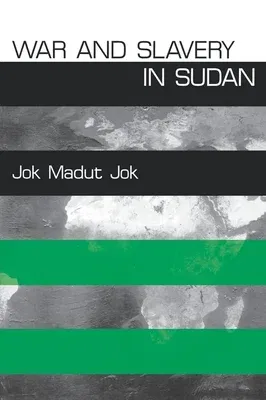Slavery has been endemic in Sudan for thousands of years. Today the
Sudanese slave trade persists as a complex network of buyers, sellers,
and middlemen that operates most actively when times are favorable to
the practice. As Jok Madut Jok argues, the present day is one such time,
as the Sudanese civil war that resumed in 1983 rages on between the Arab
north and the black south. Permitted and even encouraged by the
Arab-dominated Khartoum government, the state military has captured
countless women and children from the south and sold them into slavery
in the north to become concubines, domestic servants, farm laborers, or
even soldiers trained to fight against their own people. Also instigated
by the Khartoum government, Arab herding groups routinely take and sell
the Nilotic peoples of Dinka and Nuer.
Jok emphasizes that the contemporary practice of slavery in Sudan is not
the result of two decades of civil war, as conventional wisdom in the
media would have one believe. Instead he revisits the historic
hostilities between the Islamic world to the north and, to the south,
the Black African peoples, many of whom are Christian converts.
For Arab traders the nation of the blacks, or Bilad Al-Sudan, has
traditionally been the source of slaves. When the slave trade developed
into corporate enterprise in the nineteenth century, the slave-takers
articulated distinctions based on race, ethnicity, and religion that
marked the black, infidel southerners as indisputably inferior and
therefore natural slaves. Such distinctions have survived for decades
and have fueled various forms of oppression of the black south, even
during those periods when slavery has not been authorized by the
government. When it is authorized, as it is today, slavery then becomes
the extreme form of this systemic oppression.
War and Slavery in Sudan exposes the enslavement of black peoples in
Sudan which has been exacerbated, if not caused, by the circumstance of
war. As a black southerner and a member of the Dinka, a group targeted
by Arab slave traders, Jok brings an insider's perspective to this
highly volatile subject matter. He describes the various methods of
capture, explores the heinous experience of captivity, and examines the
efforts of slaves to escape. Jok also assesses the efforts of Dinka
communities to locate and redeem, or buy back, slaves through middlemen,
a strategy that has been supported by Western antislavery groups and
church-based humanitarian agencies but has also been the subject of
great moral debate. Throughout the book, Jok stresses that the search
for settlement of the north-south conflict must be made in conjunction
with a campaign to end slavery. He challenges the international
community to move beyond diplomatic measures to take more coordinated
action against the slave trade and bring liberation to the people of
Sudan.

